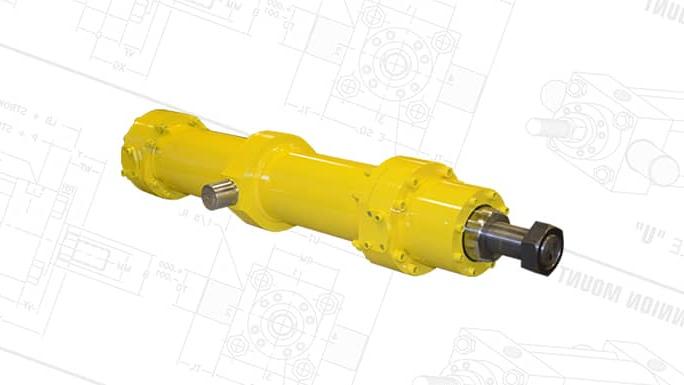Hydraulic Cylinder Guide: Repacking a Hydraulic Cylinder


A hydraulic cylinder is an actuator that uses hydraulic fluid to move linearly and produce unidirectional force. These types of cylinders have a wide range of applications and can be found in landing gears, harvesters, excavators, feeders, and manufacturing equipment.
Because hydraulic cylinders are a frequently used component, and often must operate in a wide array of environments, they do require general maintenance every now and then. Repacking hydraulic cylinders can help reduce oil leaks, extend the lifespan of the cylinder, and ultimately reduce equipment downtime.
In this article, we’ll cover everything you need to know about repacking a cylinder, including preparation and testing, the actual repacking process, and where you can find repacking kits.
As previously mentioned, repacking a hydraulic cylinder is an essential preventative maintenance task. If left ignored, oil leaks will eventually develop. These oil leaks will eventually lead to premature replacement of your hydraulic cylinders and unplanned downtime. So, repacking your cylinder when it’s needed will ensure fewer production delays, lower costs, and better efficiency.
As a general tip, you should always document any preventative maintenance work, as that will help you remember when it needs to be done next. Additionally, if you’ve noticed any of these signs, you will need to repack your cylinder as soon as possible:
Before you repack your hydraulic cylinder, you need to prepare it and test it for the repacking process.
In terms of preparation, you’ll want to make sure you follow these guidelines:
After you’ve prepared the cylinder, you’ll need to pressure test its internal seals. To do this, follow these steps:
Once all of these steps have been completed, you can then move on to the actual cylinder repacking process.
The process of repacking a hydraulic cylinder is fairly straightforward. This is another reason why it should become an integral part of your preventative maintenance program.
The repacking process involves the following steps:

That’s it— as stated, the process is straightforward and it shouldn’t take much time at all. While you’re doing this, be sure to remember how you disassembled the hydraulic cylinder and in what order so that you can make sure all parts end up back in their correct locations. Additionally, be sure you understand what your torque specifications are to ensure your lock nut and screw or install ring is properly tightened.
Still have questions? Get help from Yates Cylinders. Founded in 1972, we’re proud to be a leading manufacturer and supplier of hydraulic cylinders in North America. Our ISO-certified team can help you repair your cylinders as well as find the best hydraulic cylinder seal and repacking kits. If you have any additional questions about hydraulic cylinder repacking, or you’re interested in purchasing a kit, please fill out our online form today.
